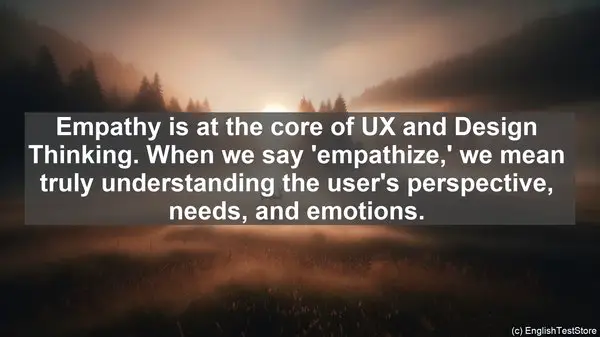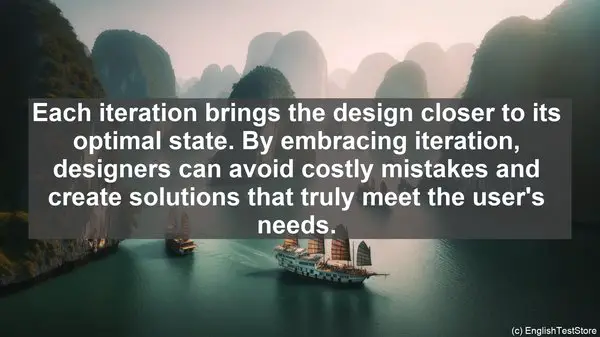Introduction: The Power of Verbs in UX and Design Thinking
Welcome to today’s lesson. When it comes to User Experience (UX) and Design Thinking, the right choice of words can make all the difference. Verbs, in particular, have a unique ability to convey action, intention, and impact. In this lesson, we’ll explore the top 10 verbs that are frequently used in the context of UX and Design Thinking. By the end, you’ll have a solid foundation for expressing and understanding key concepts in this dynamic field.
1. Identify: The Starting Point of UX
The first verb on our list is ‘identify.’ Before any design process can begin, it’s crucial to identify the problem or challenge at hand. This involves conducting research, gathering data, and understanding the needs and goals of the users. By identifying the right problem, designers can ensure that their solutions are targeted and effective.
2. Empathize: Putting Yourself in the User’s Shoes
Empathy is at the core of UX and Design Thinking. When we say ’empathize,’ we mean truly understanding the user’s perspective, needs, and emotions. This goes beyond surface-level observations. It involves conducting interviews, surveys, and usability tests to gain deep insights. By empathizing, designers can create products and experiences that truly resonate with the users.
3. Sketch: Translating Ideas into Visuals
Once the problem is identified and the user’s needs are understood, it’s time to start generating ideas. ‘Sketching’ is a verb that’s often associated with this ideation phase. It doesn’t necessarily mean creating detailed drawings. It can be as simple as rough sketches, wireframes, or even sticky notes. The goal is to visualize and communicate concepts in a quick and low-fidelity manner.
4. Iterate: The Continuous Improvement Cycle
Design is rarely a linear process. It’s more like a cycle of continuous improvement. ‘Iterate’ is the verb that captures this idea. It means going through multiple rounds of feedback, testing, and refinement. Each iteration brings the design closer to its optimal state. By embracing iteration, designers can avoid costly mistakes and create solutions that truly meet the user’s needs.

5. Prototype: From Concept to Tangible Form
A ‘prototype’ is a tangible representation of a design concept. It can be a physical model, a digital mockup, or even a functional demo. Prototyping is a verb that involves creating these representations. By prototyping, designers can test and validate their ideas before investing significant resources. It’s a crucial step in the design process.
6. Test: Validating Assumptions and Gathering Feedback
Design decisions should never be based on assumptions alone. ‘Testing’ is the verb that ensures ideas are validated through real-world feedback. This can involve usability testing, A/B testing, or even analytics analysis. By testing, designers can uncover issues, gather insights, and make data-driven decisions.
7. Refine: Polishing the Details
Great design is often in the details. ‘Refining’ is the verb that captures the process of fine-tuning and polishing a design. It can involve adjusting the layout, typography, colors, or even the interactions. The goal is to create a seamless and delightful user experience. Refinement is an ongoing process that continues even after the initial release.
8. Collaborate: The Power of Teamwork
Design is rarely a solo endeavor. ‘Collaborate’ is the verb that signifies the importance of teamwork. Whether it’s with other designers, developers, or stakeholders, collaboration ensures that diverse perspectives are considered. By collaborating, designers can tap into the collective wisdom and create solutions that are truly holistic.
9. Communicate: Sharing Ideas and Insights
Design doesn’t exist in a vacuum. ‘Communicate’ is the verb that emphasizes the need to share ideas, insights, and progress. This can involve presentations, reports, or even informal discussions. Effective communication ensures that everyone is on the same page and that the design vision is understood and embraced.
10. Advocate: Championing the User’s Needs
Last but not least, ‘advocate’ is a verb that’s often associated with UX and Design Thinking. It means being the voice of the user, even in the face of conflicting priorities. By advocating for the user’s needs, designers can ensure that the final product is truly user-centric and impactful.

